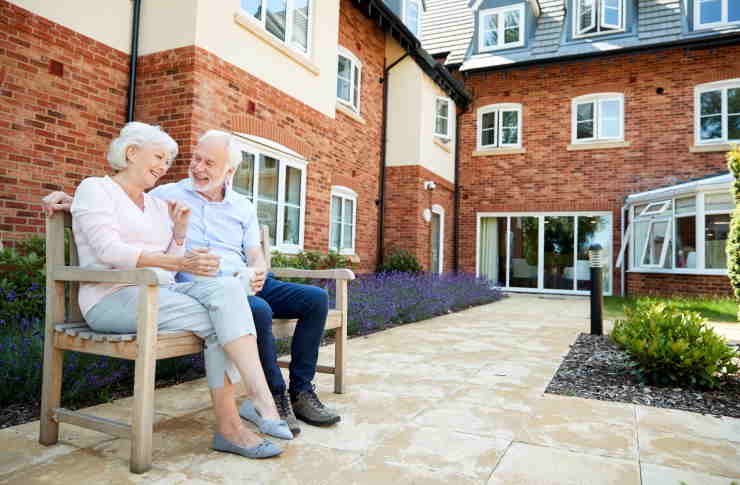Why Are Granny Annexes Gaining Popularity in the United Kingdom in 2025 for Elder Care?
In 2025, granny annexes are increasingly popular across the UK as a practical, cost-effective alternative to traditional elder care. These self-contained units support multigenerational living, independence, and family caregiving. This article explores reasons, benefits, and key considerations.

Defining a Granny Annexe
A granny annexe is a self-contained secondary dwelling situated within the grounds of a family home. Generally, it includes all necessary living spaces: a bedroom, bathroom, kitchen, and lounge. The design strikes a balance between privacy and closeness, allowing older relatives to live autonomously while remaining near family support. Contemporary annexes often feature adaptations that improve accessibility and comfort, making them ideal for long-term elder accommodation.
Growing Trends: Multigenerational Living and Rising Care Costs
Several trends in 2025 contribute to the widespread appeal of granny annexes throughout the UK:
- Escalating Elder Care Expenses: With social care fees and residential care home costs rising considerably—to an average of about £6,000 per month—families are exploring more affordable alternatives.
- Increased Life Expectancy: Older adults are living longer and wish to retain independence within familiar environments.
- Impact of the Covid-19 Pandemic: The pandemic highlighted the difficulties with family separation and restricted care home access, boosting interest in solutions that keep elderly relatives close yet safe.
- Expansion of Multigenerational Households: Families increasingly prefer living arrangements that blend independence with accessible support, fostering stronger family connections.
Financial Advantages and Savings Offered by Granny Annexes
Compared to traditional elder care approaches, granny annexes represent a cost-effective option:
- Affordable Housing Solution: Elderly individuals can downsize by selling their family home and investing part of the proceeds into a granny annexe on a relative’s property, thereby preserving inheritance funds.
- Elimination of Ongoing Care Home Fees: Unlike care homes or retirement complexes, annexes avoid monthly fees and management charges.
- Potential Boost in Property Value: Installing a thoughtfully designed granny annexe can increase a property’s overall value by roughly 20-30% of the annexe’s build cost.
Such financial benefits make granny annexes an appealing choice for numerous multigenerational families.
How Granny Annexes Promote Independence and Family Caregiving
The core appeal of granny annexes stems from providing “connected independence”:
- Independent Living: Elderly family members have their own fully equipped dwelling, fostering dignity and personal freedom.
- Close Family Proximity: Being nearby enables emotional support and prompt help without the challenges of shared living under one roof.
- Alleviation of Caregiver Stress: Separate accommodation reduces physical and emotional strain on unpaid carers by offering personal space and manageable caregiving duties.
- Benefits of Social Interaction: Proximity encourages companionship, diminishes social isolation, and supports mental health.
Innovations in Design and Technology for Elder-Friendly Annexes
Modern granny annexes feature carefully considered elements tailored to elder care, including:
- Accessibility: Wheelchair-accessible layouts, walk-in showers, raised toilets, and grab rails enhance everyday mobility.
- Safety Features: Emergency alert systems and sensor lighting provide quick assistance when necessary.
- Energy Efficiency: Insulation, double glazing, and efficient heating and cooling systems cut running costs and improve comfort.
- Smart Home Technologies: Automated lighting, remote monitoring, and smart appliances enable safe and convenient ageing in place.
- Natural Light and Soundproofing: These aspects increase comfort and wellbeing.
These advancements create a secure, comfortable environment for older adults to maintain independence without sacrificing safety.
Planning and Regulatory Issues in the UK
Understanding planning and building regulations is essential when adding a granny annexe in 2025:
- Planning Permission: Many granny annexes qualify under permitted development rights but must comply with size, placement, and ancillary use rules.
- Use Restrictions: Annexes should primarily accommodate elderly or dependent family members and not be rented out separately.
- Building Regulations: Compliance with fire safety, energy efficiency, and structural standards is required.
- Ideal Location: Annexes are best situated 10–20 metres from the main residence to support connected independence, balancing privacy and access.
Families considering granny annexes should investigate local council policies and obtain professional advice to ensure smooth approvals and compliance.
Diverse Construction Options Catering to Various Needs
The UK market provides multiple granny annexe types to suit different budgets and preferences:
- Traditional Brick Construction: Durable, visually complementary to existing homes, generally taking longer to build but offering excellent insulation and longevity.
- Timber Frame: Environmentally conscious with distinct aesthetics, usually faster to construct.
- Modular Units: Factory-manufactured annexes delivered and installed promptly, providing predictable quality and costs.
- Conversions of Existing Spaces: Economical adaptations of garages or lofts, though often with less privacy and space.
Prices vary widely depending on the chosen style, size, and finish. Notably, costs and availability differ by region and supplier.
Positive Mental Health Effects for Families and Elderly Residents
Granny annexes also play a significant role in supporting mental wellbeing and caregiver health:
- Prevention of Caregiver Burnout: Separate living quarters reduce the stresses of continuous cohabitation while enabling regular contact.
- Enhancement of Elder Autonomy: Seniors maintain control over their routines, preserving their dignity.
- Facilitation of Social Connections: Close proximity helps sustain emotional bonds between elderly residents and family members.
This balanced arrangement encourages healthy family dynamics and sustainable caregiving.
Conclusion
In 2025, granny annexes have emerged as a practical and popular choice throughout the United Kingdom for families wishing to care for older relatives while managing costs and maintaining independence. They combine accessible, cost-effective housing with the advantages of multigenerational living, supported by contemporary design innovations and accommodating planning policies. For those exploring elder care options, granny annexes offer a flexible, value-enhancing solution that strengthens family support networks and improves quality of life.
Disclaimer
Prices, costs, and availability of granny annexes vary by region, supplier, and current market conditions in the United Kingdom. Prospective buyers should conduct thorough research and consult local authorities or professionals before making decisions.
Sources
- Granny Annexe Full Guide. Grannexe.co.uk.
- Demand for Granny Annexes Surges at Flintshire Firm. Deeside.com.
- Why Granny Annexes Are So Popular in 2025. Provokepulse.com.




